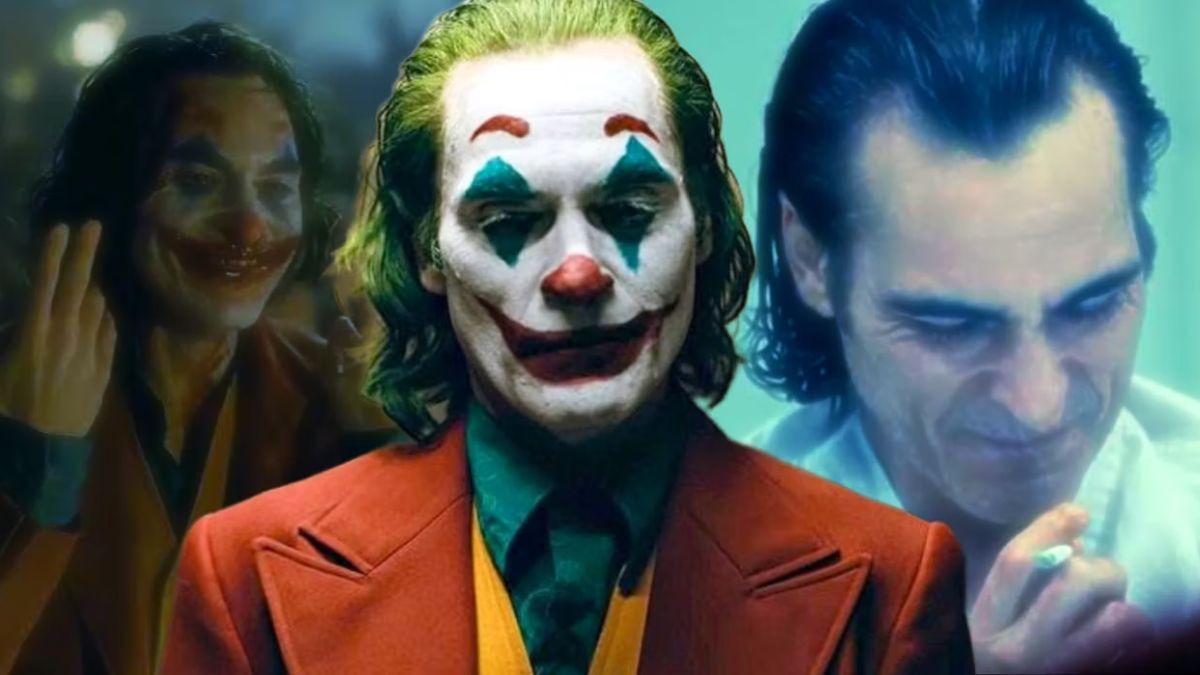 Credits: Screen Rant
Credits: Screen Rant
Advertisement
Joker (2019) was a cinematic game-changer. Not only did it rake in over $1 billion at the global box office, but it also cemented its place as the highest-grossing R-rated film of all time. Director Todd Phillips and star Joaquin Phoenix delivered a dark, psychological portrait of Arthur Fleck, a troubled loner whose descent into violent madness resonated deeply with audiences and critics alike. It was a film that tapped into the zeitgeist, capturing the raw anger of a disillusioned man enacting a violent revenge fantasy against a world that had failed him.
But in Joker: Folie à Deux, Phillips takes a dramatic left turn. Instead of doubling down on the original’s grit and violence, he delivers an unexpected blend of prison drama, courtroom thriller, and, most controversially, a musical. While this bold shift in tone may appeal to some, many fans and critics are left scratching their heads, asking the question: Who is this movie for?
From Loner to Lover: Joker’s Story So Far
Folie à Deux opens with Arthur Fleck institutionalized at Arkham State Hospital, awaiting trial for the murders he committed in the first film. He’s a shadow of the man he once was, abused by the guards and completely devoid of the manic energy that once defined his Joker persona. It’s a grim setting, one that feels like a continuation of the dark world Phillips built in the first film. But the introduction of Lady Gaga’s character, Lee Quinzel, this film’s version of Harley Quinn ushers in a new and unexpected twist.
Lee, a fellow inmate at Arkham, quickly forms a bond with Arthur. As their relationship deepens, Arthur stops taking his medication and begins to regain his Joker “mojo.” Lee, a self-professed Joker fanatic who checked herself into Arkham just to meet him, reignites Gotham’s Joker-inspired chaos, while Arthur spirals back into his delusions.
It’s a twisted romance, and one that could have provided fertile ground for a compelling character study. But Phillips’ decision to make much of the film a musical complete with reimagined versions of classic songs seems to undercut the sense of menace that made Joker so powerful in the first place.
A Divisive Ending Of Joker’s Films
If Joker: Folie à Deux was simply a musical prison drama, it might have been dismissed as an ambitious misfire. But the film’s final act throws a wrench into the entire Joker mythos that has left audiences more confused than ever.
In the climactic courtroom scenes, Arthur disavows his Joker identity entirely, telling the jury that there “is no Joker, only Arthur.” He confesses to smothering his abusive mother in addition to the murders he committed in the first film, but before the jury can fully convict him, a car bomb explodes outside, severely injuring Gotham’s Assistant District Attorney, Harvey Dent, setting the stage for his transformation into the villainous Two-Face.
But just when it seems like Arthur is about to embrace his role as Gotham’s most notorious villain once again, he is rejected by Lee, who tells him she no longer loves him. This rejection marks the beginning of the end for Arthur.
Back at Arkham, the final twist arrives: another inmate stabs Arthur to death in the prison hallway. As Arthur bleeds out on the floor, his killer mutilates his own face into a grotesque smile, a moment that clearly nods to Heath Ledger’s iconic portrayal of the Joker in The Dark Knight (2008). This unsettling scene implies that Arthur Fleck was never Gotham’s true Joker. Instead, the Joker mantle is seemingly passed on to this anonymous inmate, leaving the audience to wonder what Phillips is trying to say.
Joker vs. Joker: A Study in Contrast
The ending of Folie à Deux starkly contrasts with the original Joker, where Arthur’s transformation into the Clown Prince of Crime was a deeply personal and cathartic moment. In Joker, Arthur’s journey was clear. He was a victim of a broken system, lashing out in a way that while disturbing, felt rooted in his character’s descent into madness. It made sense, and audiences could understand how he evolved from downtrodden comedian to murderous villain.
In Folie à Deux, however, Phillips seems to undermine the very premise that made Joker so compelling. By suggesting that Arthur is not and never was the Joker we’ve known since the character’s inception in 1940, Phillips effectively pulls the rug out from under the audience. This new Joker, if the film’s final moments are to be believed, is simply a random inmate with a violent streak.
The Bigger Picture of Joker
Phillips has always maintained that his Joker films exist outside of the DC Extended Universe (DCEU), and this choice makes that abundantly clear. Unlike the DCEU, where characters are carefully crafted within an interconnected world, Folie à Deux leaves the Joker legacy deliberately ambiguous.
This ambiguity could be seen as a bold artistic choice. After all, Joker was never about creating a comic book villain in the traditional sense. But the decision to leave audiences with a “gotcha” twist in the final moments risks alienating those who connected with the original film’s raw portrayal of mental illness and societal failure.
As Phillips told Empire ahead of the release of Folie à Deux, “Arthur clearly is not a criminal mastermind. He was never that.” It’s an intriguing comment, but one that ultimately feels like a disservice to the complex character Phillips crafted in the first film. By robbing Arthur of the Joker identity, Folie à Deux feels less like a continuation of Arthur’s story and more like a confusing coda.
While Joker (2019) delivered a grounded, gritty origin story that resonated with audiences, Joker: Folie à Deux veers into experimental territory that has left many fans divided. The shift from psychological thriller to musical, coupled with the twist that Arthur may not be the true Joker, makes the sequel feel more like a thought experiment than a fully realized story.
